Die Durchflussmessung ist ein wesentlicher Bestandteil industrieller und wissenschaftlicher Prozesse. Zu den verschiedenen Durchflussmessgeräten gehören, Rotameter zeichnen sich durch ihre Einfachheit, Zuverlässigkeit und Vielseitigkeit aus. Sie werden häufig in Laboratorien, industriellen Prozessen und medizinischen Geräten zur Messung der Durchflussmenge von Flüssigkeiten und Gasen eingesetzt. In diesem Blogbeitrag erfahren Sie alles, was Sie über Rotameter wissen müssen, einschließlich ihrer Konstruktion, Funktionsweise, Merkmale, Typen, Vorteile, Einschränkungen und Anwendungen.
Inhaltsübersicht
Was ist ein Rotameter?
A Rotameter ist ein Durchflussmesser mit variablem Querschnitt, der die Durchflussmenge von Flüssigkeiten oder Gasen in einem vertikalen Rohr misst. Das Gerät arbeitet auf der Grundlage der Schwerkraft und der dynamischen Kräfte der Flüssigkeit. Der Begriff "Rotameter" leitet sich von der Drehung des Schwebekörpers ab, der zur Anzeige der Durchflussmenge verwendet wird.
Rotameter werden häufig verwendet, weil sie einfach und kostengünstig sind und keine externe Energiequelle benötigen. Sie liefern eine direkte visuelle Anzeige der Durchflussmenge und sind daher einfach zu bedienen und zu warten.
Konstruktion von Rotametern
Ein Rotameter besteht aus den folgenden Hauptkomponenten:
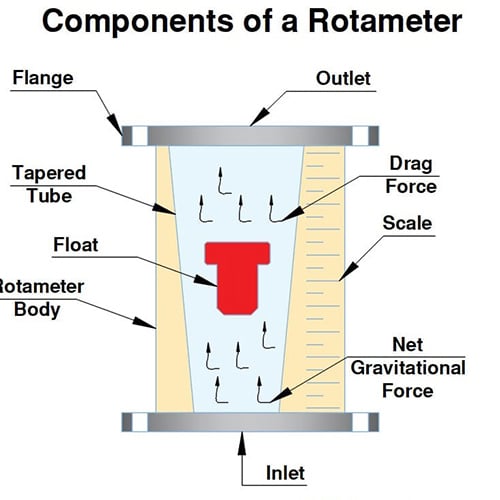
- Kegelförmiges Rohr:
- Aus transparentem Material wie Glas oder Kunststoff (für sichtbaren Durchfluss) oder Metall (für Haltbarkeit bei hohem Druck oder undurchsichtigen Bedingungen).
- Das Rohr ist vertikal ausgerichtet, wobei der Durchmesser von unten nach oben zunimmt.
- Schwimmer:
- Ein fester Gegenstand (in der Regel Metall, Kunststoff oder Keramik) im Inneren der Röhre.
- Der Schwimmer bewegt sich in Abhängigkeit von der Durchflussmenge frei auf und ab.
- Die Form des Schwimmers variiert je nach Anwendung (z. B. kugelförmig, ellipsoidisch oder konisch).
- Skala oder Markierungen:
- Skalen oder Markierungen auf dem Schlauch zeigen die Durchflussmenge an.
- Die Kalibrierung ist spezifisch für die zu messende Flüssigkeit (unter Berücksichtigung von Viskosität, Dichte und Druck).
- Einlass- und Auslassanschlüsse:
- Das Rohr hat unten einen Einlass und oben einen Auslass, so dass die Flüssigkeit senkrecht nach oben fließen kann.
- Durchflussregelventil (optional):
- Einige Rotameter sind mit einem Ventil zur Regulierung der Durchflussmenge ausgestattet.
Funktionsprinzipien von Rotametern
Die Funktionsweise eines Rotameters beruht auf den folgenden Prinzipien Schwerkraft und Strömungsdynamik:
- Die Flüssigkeit tritt durch den unteren Einlass in den Rotameter ein und fließt nach oben durch das konische Rohr.
- Der Schwimmer im Inneren des Rohrs wird durch die Kraft des Flüssigkeitsstroms angehoben.
- Wenn der Schwebekörper ansteigt, verringert die zunehmende Querschnittsfläche des Rohrs die Geschwindigkeit der Flüssigkeit und vergrößert den Durchflussbereich.
- Der Schwimmer erreicht eine Position, in der die von der Flüssigkeit ausgeübte Aufwärtskraft gleich der auf den Schwimmer wirkenden Abwärtsschwerkraft ist.
- Die Position des Schwebekörpers ist proportional zur Durchflussmenge und wird an der kalibrierten Skala auf dem Rohr abgelesen.
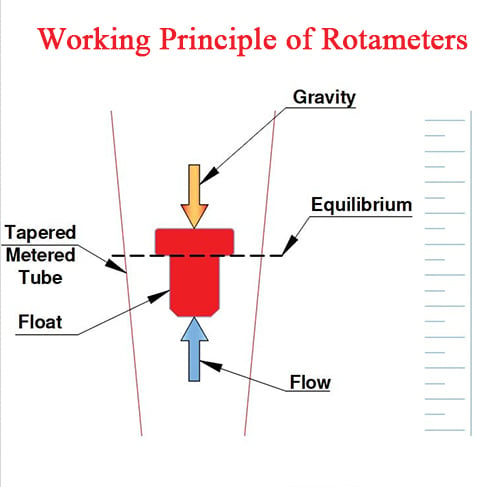
Die wichtigsten beteiligten Kräfte:
- Auftrieb: Die von der Flüssigkeit ausgeübte Aufwärtskraft.
- Gravitationskraft: Das Gewicht des Schwimmers zieht ihn nach unten.
- Schleppkraft: Der Widerstand, der durch die Umströmung des Schwebekörpers entsteht.
Merkmale der Rotameter
- Fluss Proportionalität: Die Position des Schwebekörpers ist direkt proportional zur Durchflussmenge.
- Lineare Skala: Rotameter bieten eine lineare Beziehung zwischen der Position des Schwebekörpers und der Durchflussmenge und sind daher leicht ablesbar.
- Schwerkraft-Abhängigkeit: Die Rotameter müssen für eine genaue Messung senkrecht eingebaut werden.
- Druck- und Temperaturempfindlichkeit: Die Leistung kann je nach Druck und Temperatur der Flüssigkeit variieren.
- Flüssigkeitskompatibilität: Rotameter sind mit einer Vielzahl von Flüssigkeiten und Gasen kompatibel, vorausgesetzt, das Material der Konstruktion passt zu den Eigenschaften der Flüssigkeit.
Verschiedene Arten von Rotametern
Rotameter gibt es in verschiedenen Ausführungen, die auf bestimmte Anwendungen zugeschnitten sind. Hier sind die wichtigsten Typen:
1. Glasrohr-Rotameter
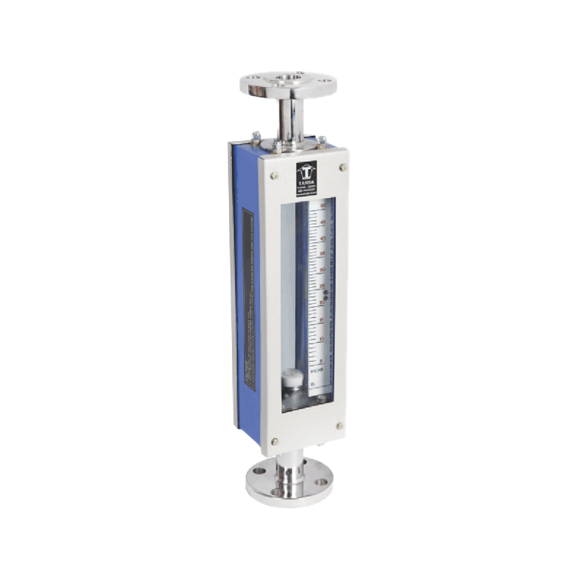
- Beschreibung: Die Röhre ist aus transparentem Glas, so dass der Float direkt sichtbar ist.
- Anwendungen: Wird in Laboratorien und medizinischen Geräten für saubere und transparente Flüssigkeiten verwendet.
- Vorteile: Klare visuelle Anzeige des Durchflusses, einfache Konstruktion.
- Beschränkungen: Zerbrechlich und für Hochdruckanwendungen ungeeignet.
2. Metallrohr-Durchmesser
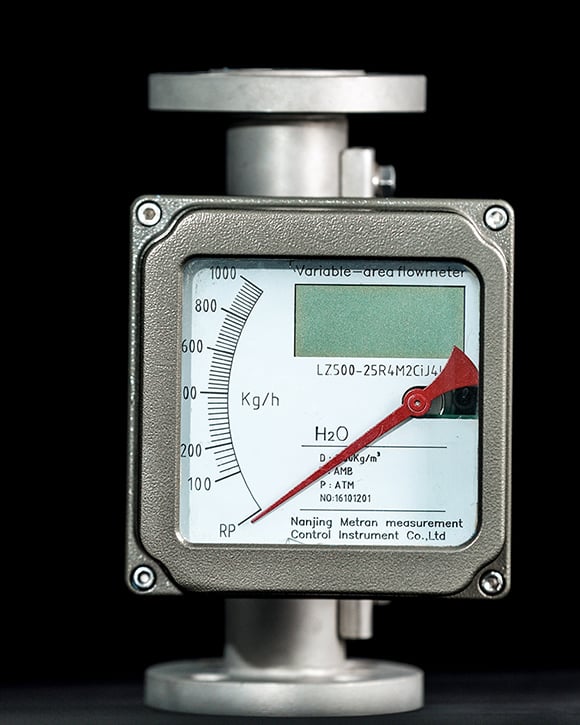
- Beschreibung: Die Röhre ist aus Metall, oft mit einer externen magnetischen oder elektronischen Anzeige.
- Anwendungen: Industrielle Prozesse mit hohem Druck oder undurchsichtigen Flüssigkeiten.
- Vorteile: Langlebig, druckbeständig und für raue Umgebungen geeignet.
- Beschränkungen: Geringere Sichtbarkeit des Schwimmers; erfordert externe Indikatoren.
3. Kunststoffrohr-Durchmesser
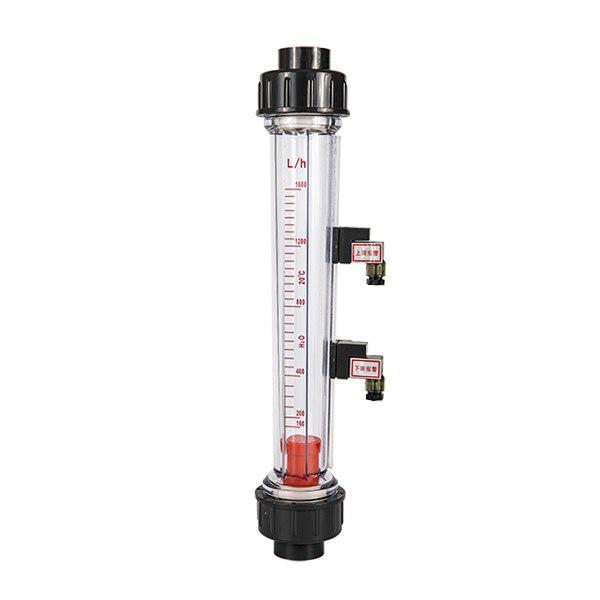
- Beschreibung: Hergestellt aus leichtem und korrosionsbeständigem Kunststoff.
- Anwendungen: Chemie- und Wasseraufbereitungsanlagen, bei denen die Korrosionsbeständigkeit entscheidend ist.
- Vorteile: Erschwinglich, leicht, resistent gegen korrosive Flüssigkeiten.
- Beschränkungen: Begrenzte Druck- und Temperaturbeständigkeit.
4. Gepanzerte Rotameter
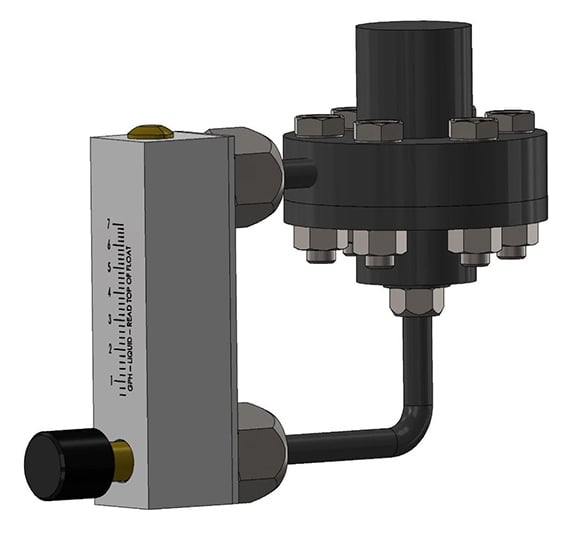
- Beschreibung: Entwickelt für extreme Bedingungen mit gepanzertem Schutz für das Rohr.
- Anwendungen: Industrielle Hochdruck- und Hochtemperaturbereiche.
- Vorteile: Hohe Haltbarkeit und Sicherheit.
- Beschränkungen: Kostspieliger als Standard-Rotameter.
5. Rotameter spülen
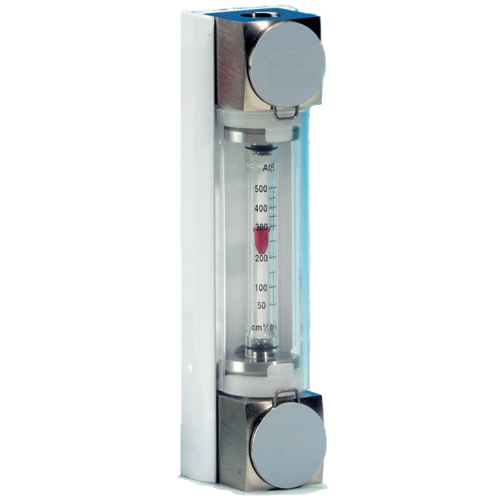
- Beschreibung: Kleine Rotameter für niedrige Durchflussmengen.
- Anwendungen: Gasdurchflussmessung in analytischen Geräten.
- Vorteile: Präzise für sehr niedrige Durchflussraten.
- Beschränkungen: Begrenzt auf Anwendungen mit geringem Durchfluss.
Vorteile von Rotametern
- Einfaches Design:
- Einfach zu installieren, zu bedienen und zu warten.
- Erfordert keine externe Stromzufuhr.
- Kostengünstig:
- Kostengünstig im Vergleich zu anderen Durchflussmessgeräten.
- Direkte visuelle Anzeige:
- Ermöglicht eine sofortige und intuitive Ablesung der Durchflussmenge.
- Vielseitig:
- Geeignet für ein breites Spektrum von Fluiden, einschließlich Flüssigkeiten und Gasen.
- Dauerhaftigkeit:
- Die metallischen und gepanzerten Rotameter sind für den Einsatz unter rauen industriellen Bedingungen konzipiert.
Beschränkungen der Rotameter
- Orientierungsabhängigkeit:
- Muss vertikal installiert werden, um genaue Messwerte zu gewährleisten.
- Begrenzte Genauigkeit:
- Nicht so präzise wie moderne elektronische Durchflussmesser.
- Druck- und Temperatureinschränkungen:
- Rotameter aus Glas und Kunststoff sind für Hochdruck- oder Hochtemperaturanwendungen nicht geeignet.
- Fragilität:
- Rotameter aus Glas sind in industrieller Umgebung sehr bruchgefährdet.
- Keine Datenaufzeichnung:
- Die Rotameter bieten keine elektronische Datenausgabe oder Protokollierungsmöglichkeiten.
Anwendungen von Rotametern
Rotameter werden aufgrund ihrer Vielseitigkeit und Einfachheit in einer Vielzahl von Branchen und Anwendungen eingesetzt:
1. Industrielle Prozesse
- Beispiele: Chemische Verarbeitung, Öl- und Gasindustrie sowie Wasseraufbereitungsanlagen.
- Zweck: Messung und Überwachung von Flüssigkeitsströmen in Rohrleitungen.
2. Medizinische Ausrüstung
- Beispiele: Sauerstoffdurchflussmesser in Anästhesiegeräten.
- Zweck: Präzise Kontrolle der medizinischen Gase.
3. Laboratorien
- Beispiele: Durchflussmessung in Forschungs- und Entwicklungsprojekten.
- Zweck: Messung der Durchflussmengen von Versuchsflüssigkeiten.
4. HLK-Systeme
- Beispiele: Luftstrommessung in Heiz- und Kühlsystemen.
- Zweck: Überwachung und Steuerung der Luftzirkulation.
5. Lebensmittel- und Getränkeindustrie
- Beispiele: Durchflussüberwachung in Getränkeherstellungsanlagen.
- Zweck: Gewährleisten Sie gleichbleibende Durchflussraten der Zutaten.
6. Analytische Instrumente
- Beispiele: Gaschromatographie und Spektroskopie.
- Zweck: Messung niedriger Durchflussraten von Trägergasen.
Rotameter gehören nach wie vor zu den einfachsten und zuverlässigsten Durchflussmessgeräten, die heute verwendet werden. Ihre Vielseitigkeit, Benutzerfreundlichkeit und Kosteneffizienz machen sie zu einer beliebten Wahl in verschiedenen Branchen. Auch wenn sie Einschränkungen haben - wie z. B. die Empfindlichkeit gegenüber der Ausrichtung und die begrenzte Genauigkeit - eignen sie sich gut für Anwendungen, die eine unkomplizierte und kostengünstige Lösung erfordern.
Wenn Sie den Aufbau, die Funktionsprinzipien und die Anwendungen verstehen, können Sie den richtigen Rotameter-Typ für Ihre speziellen Anforderungen auswählen. Ganz gleich, ob Sie in einer Industrieanlage, einer medizinischen Einrichtung oder einem Labor arbeiten, Rotameter bieten eine praktische Lösung für die Messung des Flüssigkeitsdurchflusses bei minimaler Komplexität.

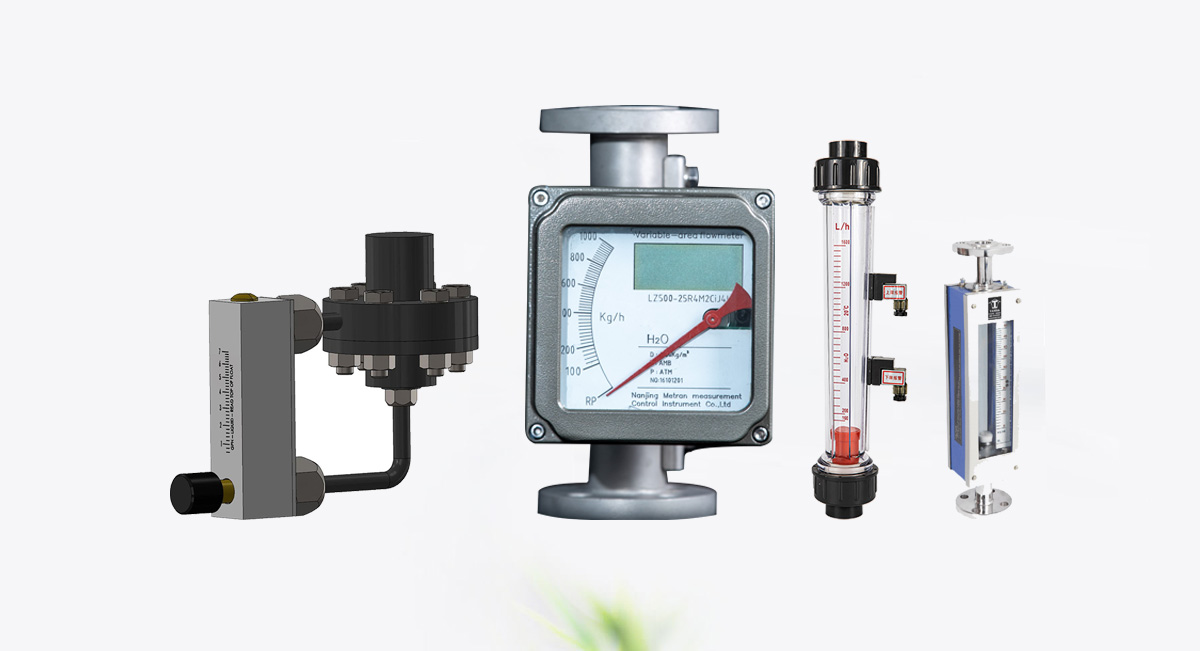
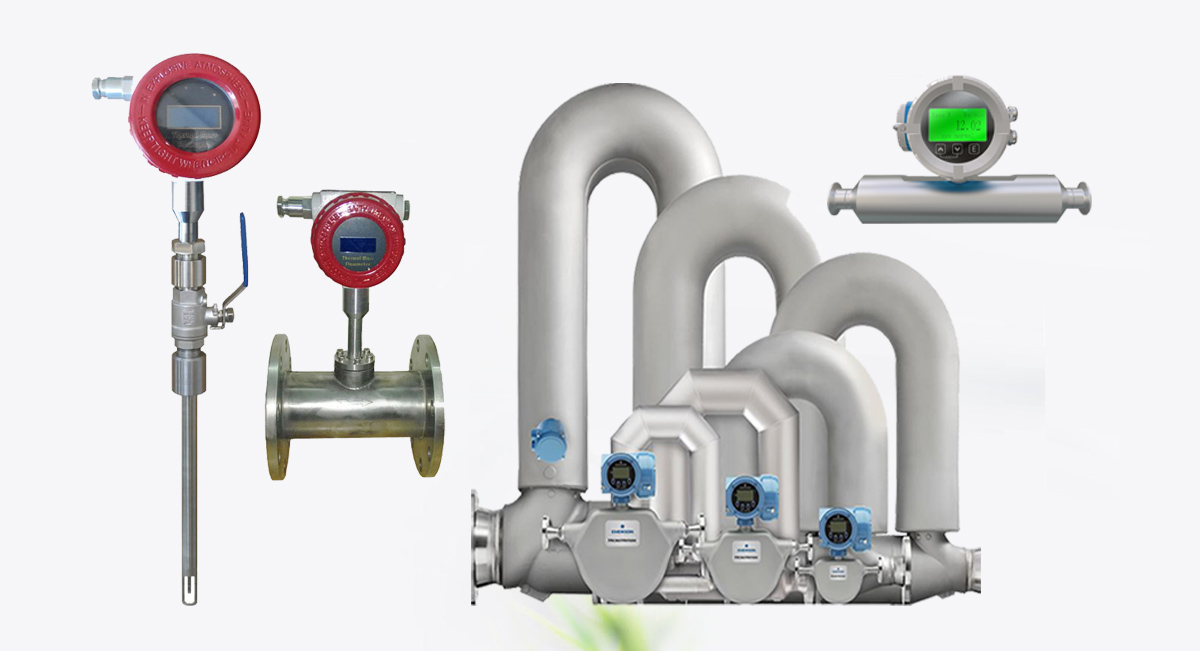
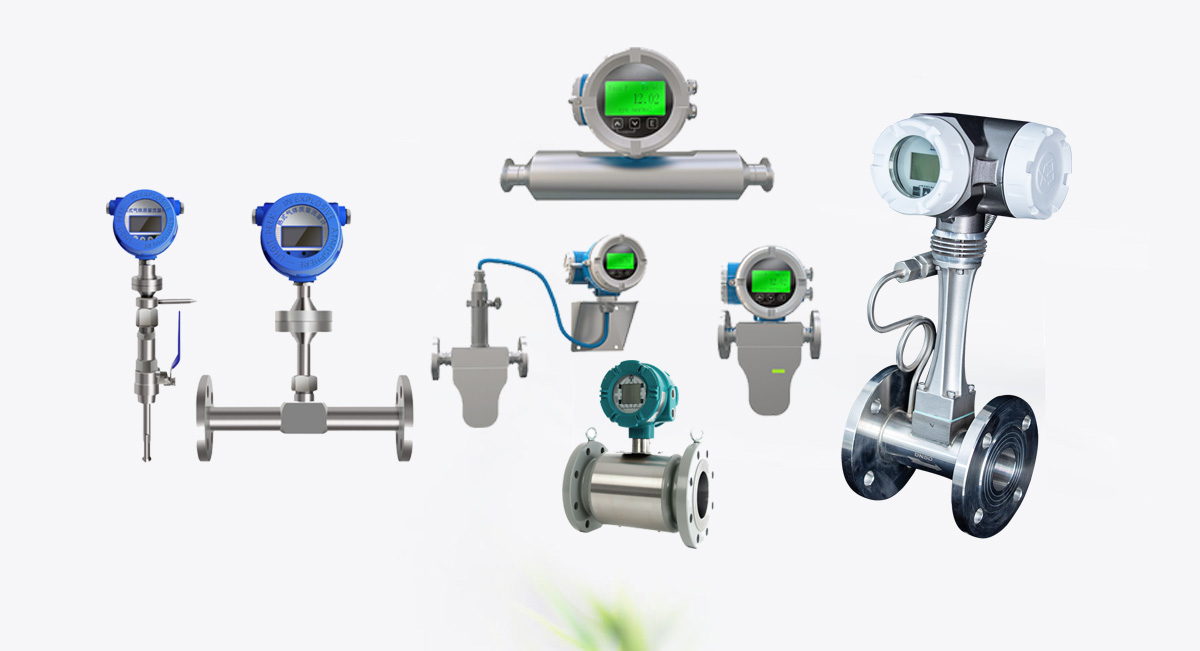

Hinterlassen Sie einen Kommentar